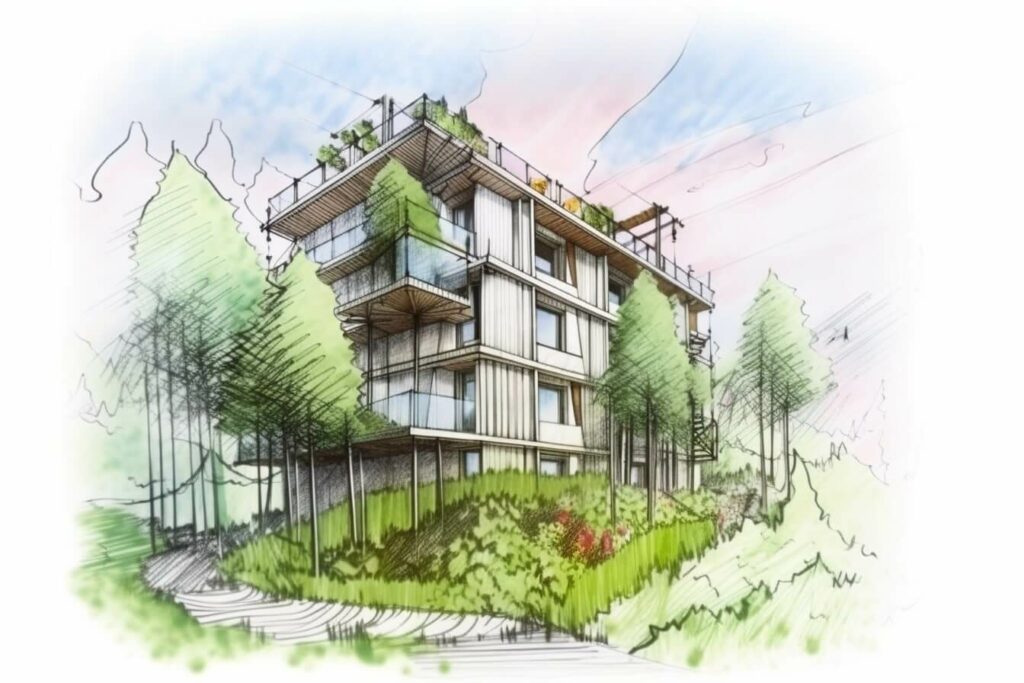
Sustainable real estate, characterized by green buildings and eco-friendly practices, is transforming the construction and property management industries. This article explores the principles of sustainable real estate, highlighting the benefits of green buildings, eco-friendly practices, and the growing importance of sustainability in the real estate sector.
Principles of Sustainable Real Estate
1. Energy Efficiency
Green buildings prioritize energy efficiency through design, construction materials, and operational practices. Features such as solar panels, energy-efficient appliances, LED lighting, and high-performance insulation reduce energy consumption and lower utility costs for tenants and owners.
2. Water Conservation
Sustainable buildings incorporate water-efficient fixtures, rainwater harvesting systems, and landscaping practices that minimize water usage and promote conservation. Water-efficient technologies, such as low-flow toilets and drip irrigation, reduce water waste and support environmental sustainability.
3. Materials and Resources
Green buildings emphasize the use of sustainable and recycled materials, reducing environmental impact during construction and renovation projects. Recycled content, locally sourced materials, and sustainable forestry practices contribute to resource conservation and minimize carbon footprint.
Benefits of Green Buildings
1. Cost Savings
Green buildings offer long-term cost savings through reduced energy and water expenses, lower operational costs, and enhanced asset value. Energy-efficient features and sustainable practices contribute to financial savings for owners, investors, and tenants over the building’s lifecycle.
2. Enhanced Indoor Environmental Quality
Green buildings prioritize indoor air quality, natural lighting, and thermal comfort to create healthier and more productive indoor environments. Enhanced ventilation systems, non-toxic building materials, and daylighting strategies improve occupant health, comfort, and well-being.
3. Market Differentiation and Value
Sustainable buildings are increasingly preferred by tenants, investors, and stakeholders seeking environmentally responsible and socially conscious properties. Green certifications, such as LEED (Leadership in Energy and Environmental Design) and ENERGY STAR ratings, enhance marketability and property value in competitive real estate markets.
Eco-Friendly Practices in Real Estate
1. Sustainable Design and Construction
Integrate sustainable design principles from the initial planning stages through construction, renovation, and building operations. Collaborate with architects, engineers, and contractors to implement green building strategies that prioritize environmental stewardship and energy efficiency.
2. Renewable Energy Integration
Incorporate renewable energy sources, such as solar panels, wind turbines, and geothermal systems, to reduce reliance on fossil fuels and lower greenhouse gas emissions. Renewable energy technologies support sustainable energy practices and contribute to carbon neutrality goals.
3. Green Building Certifications
Seek green building certifications, such as LEED, ENERGY STAR, or BREEAM (Building Research Establishment Environmental Assessment Method), to validate sustainable building practices and demonstrate commitment to environmental responsibility. Certifications enhance building performance, occupant satisfaction, and operational efficiency.
Sustainable Real Estate Trends
1. Net-Zero Buildings
Net-zero energy buildings produce as much energy as they consume annually through renewable energy sources and energy-efficient design strategies. Net-zero buildings contribute to energy independence, carbon neutrality, and environmental sustainability goals.
2. Circular Economy Principles
Embrace circular economy principles in real estate development and management, focusing on waste reduction, materials reuse, and lifecycle sustainability. Implement recycling programs, sustainable procurement practices, and building decommissioning strategies to minimize environmental impact.
Conclusion
Sustainable real estate, characterized by green buildings and eco-friendly practices, offers significant benefits for owners, investors, tenants, and communities. By prioritizing energy efficiency, water conservation, and materials sustainability, sustainable buildings contribute to cost savings, enhanced indoor environmental quality, and market differentiation. Embrace sustainable real estate principles and eco-friendly practices to promote environmental stewardship, improve property performance, and create healthier, more resilient built environments for future generations.